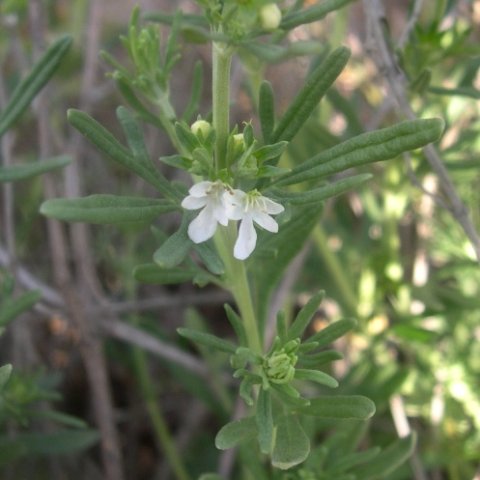Teucrium africanum

Author: Ivan Lätti
Photographer: Louis Jordaan
Teucrium africanum, commonly in Afrikaans paddaklou (frog claw) or aambeibossie (little haemorrhoid bush) like some chironias, is a grey, rounded shrublet reaching 30 cm in height. The slender branches are four-angled.
The hairy, grey-green leaves are deeply three-lobed. They become about 25 mm long, the lobes 3 mm wide.
The small, white flowers are borne solitary on short pedicels from leaf axils, sometimes two or three growing together. The calyces are bell-shaped.
The corolla tubes are short and hairy in the throat, the lowest of the five lobes the biggest. The lobes are elliptic to oblong and round-tipped. The four stamens are exserted, their filaments hairy at the base and the anthers two-lobed. The ovary is four-lobed, the style slightly longer than the stamens. Flower diameter is about 5 mm.
Flowering happens from late spring to after midautumn.
The fruits are rough-surfaced nutlets.
The species distribution is in the south of the Western Cape from Bredasdorp eastwards coastally and across the Little Karoo to the Eastern Cape, as far as Graaff-Reinet and Gqeberha. The photo was taken at Minwater near Oudtshoorn.
The habitat is dry scrub flats and slopes where the soils are clayey and loamy, the plants often proliferating in disturbed patches. The species is not considered threatened in habitat early in the twenty first century (Vlok and Schutte-Vlok, 2015; Leistner, (Ed.), 2000; Bond and Goldblatt, 1984; iNaturalist; http://redlist.sanbi.org).

